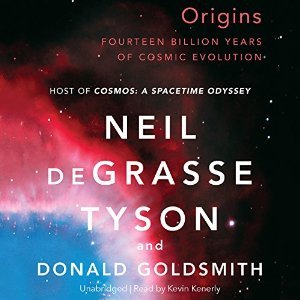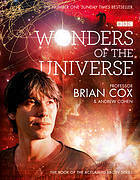
Astrophysics for People in a Hurry
Book Description
The cosmos sprawls endlessly, a mysterious tapestry of dark matter, swirling galaxies, and cosmic wonders waiting to be unveiled. Neil deGrasse Tyson ignites a spark of curiosity, guiding you on a whirlwind journey through the universe's most compelling questions and enlightenment. With each page, explosive revelations burst forth—from the birth of stars to the intricate dance of quantum physics. The scale of it all is staggering, inviting you to ponder your place in this vast expanse. What if the secrets of existence are just a page away, ready to reshape your understanding of the universe?
Quick Book Summary
"Astrophysics for People in a Hurry" provides a concise, captivating overview of the universe and its mysteries for readers pressed for time. Neil deGrasse Tyson brings complex concepts—such as the origins of space and time, the nature of dark matter and dark energy, and the evolution of galaxies—down to earth with wit and clarity. The book covers the history of the cosmos, the building blocks of matter, and humanity’s attempts to unravel the universe’s fundamental secrets. Tyson invites readers to discover cosmic phenomena that shape our existence, while encouraging a sense of wonder and humility about our place in the cosmos. The result is an accessible and entertaining introduction to astrophysics that inspires curiosity and awe in scientists and laypeople alike.
Summary of Key Ideas
Table of Contents
The Origins and Structure of the Universe
Neil deGrasse Tyson opens by helping readers appreciate the vast scale and age of the universe. He explains how the Big Bang set everything in motion, creating time and space as we know them. Tyson uses everyday analogies to explain how galaxies, stars, and planets formed from primordial elements. The book addresses the cosmic timeline, showing how humans have only recently appeared in this immense story. By breaking down complex ideas, Tyson fosters a sense of curiosity while keeping readers oriented in the cosmic expanse.
The Role of Invisible Matter and Energy
A central theme is the unseen universe—dark matter and dark energy, which together comprise roughly 95% of the cosmos. Tyson unpacks how astronomers deduced the existence of dark matter from the behavior of galaxies, and how the accelerated expansion of the universe suggests the influence of dark energy. He makes clear that while these phenomena remain mysteries, their effects are empirically measured, highlighting astrophysics’ blend of observation and imagination.
Humanity’s Place in the Cosmos
Tyson explores the quantum realm, where the familiar laws of nature give way to strange behaviors. He describes the four fundamental forces—gravity, electromagnetism, weak and strong nuclear force—and how they interact to create the structure of everything we observe. The interplay between quantum mechanics and cosmology demonstrates how the tiniest particles underpin the largest structures in the universe, linking the micro and macro scales in surprising ways.
Fundamental Forces and the Quantum World
The book also considers humanity’s perspective on the cosmos. Tyson discusses how our place on Earth, orbiting an ordinary star in a nondescript galaxy, inspires both humility and wonder. He highlights the importance of scientific inquiry and skepticism, cautioning against arrogance in thinking we know all the answers. By reflecting on our cosmic address, Tyson encourages readers to recognize both the insignificance and the magnificence of human existence.
The Evolution of Scientific Understanding
Concluding, Tyson traces the development of scientific understanding, from early astronomers to modern physics. He shows how each generation builds upon prior knowledge, advancing our grasp of the universe through observation, theory, and technological innovation. Tyson emphasizes the importance of curiosity and the ongoing pursuit of answers—reminding readers that while many cosmic mysteries remain, the journey of discovery itself enriches our appreciation of existence.
Download This Summary
Get a free PDF of this summary instantly — no email required.





